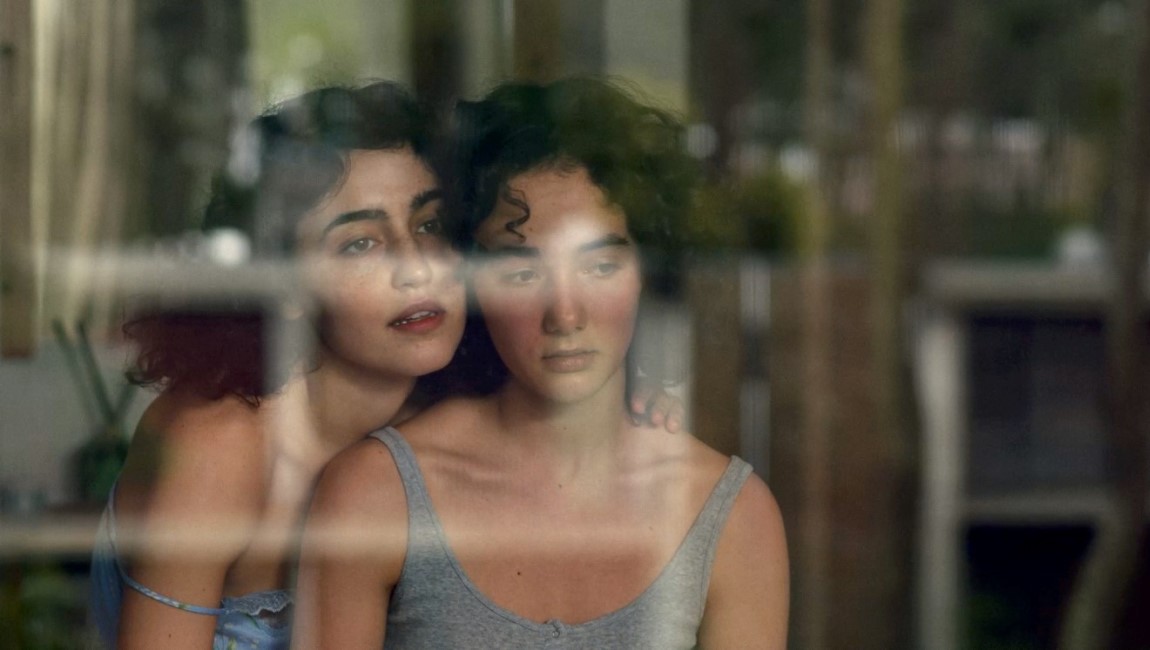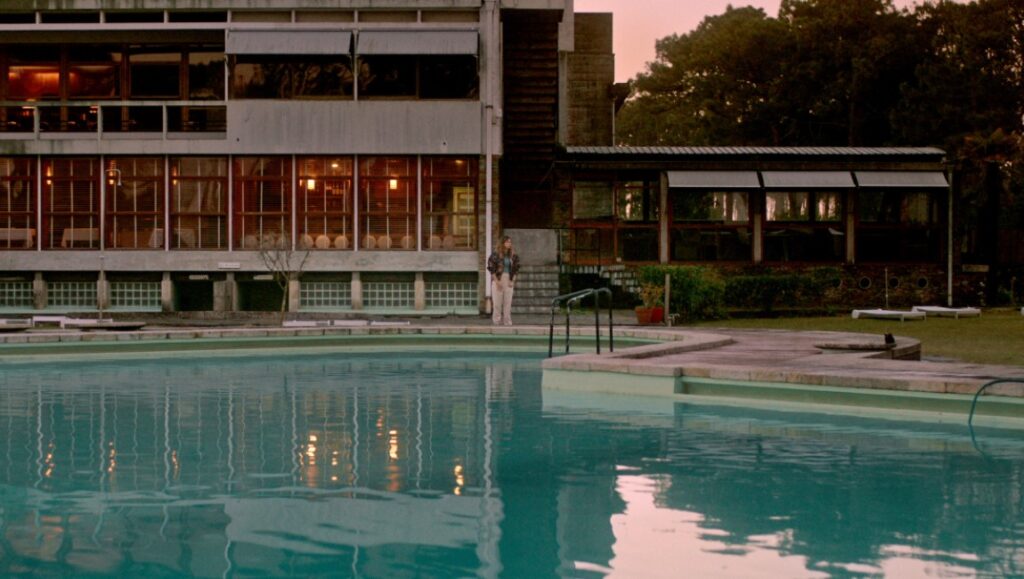In João Canijo’s Berlinale competition film Bad Living, long shots are composed so precisely that their motivations frequently don’t become clear for minutes — often when protagonist Piedade (Anabela Moreira) appears in a mirror or at the margins of a doorway, again hearing her family discuss her lack of stability. We are taken off guard, just as Piedade is, at the beginning of the film when her mother, Sara (Rita Blanco), brings her estranged daughter, Salóme (Madalena Almeida) — whose father has died — to stay at the hotel they run. Piedade, Sara, and Salóme proceed to develop a catalog of terrible things mothers and daughters can say to each other, until Piedade finally enacts the other type of long shot Canijo employs, in which entropy slowly dissolves an initially motivated composition.
But Bad Living isn’t the only film Canijo brought to Berlinale this year — Living Bad premiered a day later, in the Encounters section. Living Bad is set over the same period of time in the same hotel as Bad Living, and begins with photographer Jaime (Nuno Lopes) and his influencer girlfriend, Camila (Filipa Areosa), checking in. As Jaime and Camila fight and Jaime’s mother intercedes via phone, the pacing makes clear their story will reach the endpoint Bad Living necessitates long before the two-hour mark both films share, and indeed Living Bad makes time for two more couples staying at the hotel. In both subsequent stories, the mother is present; Graça (Lia Carvalho) and Alex (Rafael Morais) are joined by Graça’s particularly cruel mother, Elisa (Leonor Silveira); and though Judite (Beatriz Batarda) is more outwardly nurturing towards her actress daughter, Julia (Carolina Amaral), she still endeavors to break up her relationship with her girlfriend, Alice (Leonor Vasconcelos).
In dividing this project into two films, Canijo encourages us to locate the dichotomies between the maternal themes presented in both. Piedade’s relationship with Salóme is defined largely by their separation through Salóme’s adolescence. Even when they break from sparring to attempt tenderness, that gap cannot be bridged, and watching her granddaughter’s suffering mirrors, and maps, that gap onto Sara and Piedade. Conversely, the maternal relationships of Living Bad are defined by presence, such that though it’s clear each mother introduces a breaking point into their child’s relationship, it’s less apparent whether or not those relationships were susceptible to breakage as a result of constant interference or due to the inherent dynamics. The boundaries of the relationships in Living Bad are stretched then, but in Bad Living, Piedade’s tolerance for her non-relationship is stretched even thinner. A starker comparison is found between the performances of Anabela Moreira as Piedade and the leads of Living Bad; when contrasted to the couples’ more frivolous arguments in that film, her depression appears far more dire than when it’s allowed to pervade Bad Living. So while the maternal relationships of the two films function as each other’s counterpoints, all are ultimately defined by dysfunction.
If the maternal themes of the two films become repetitive, plenty of structural mechanics remain to captivate the viewer. It’s most enriching to mentally fit the pieces together while still leaving some space; it allows the mind to wander, and consider the relationship between the films, especially during the various segments of Living Bad. A scene at the pool and a dinner replay several times but from oblique angles, and though perhaps a viewer who understands Portuguese may be able to focus on one strand of conversation, the English captions muddle them, as the sound design seems to also. Two other women working at the hotel, Ângela and Piedade’s cousin, Raquel, exist mostly in these vaguely defined spaces, as they function largely as peripheral characters. Each film features a scene with the two of them: one in Living Bad shows them cleaning Jaime and Camila’s room, subtly doling out information about the four of them, which makes the corresponding scene in Bad Living, in which Ângela catches Raquel post-coitus, feel catapulted in from its companion in order to make the sex feel inevitable when it occurs.
What is perhaps most exciting about Canijo’s diptych is the space left to explore. Though Bad Living premiered first — and its place among the prestigious competition bestows an inevitable, if perhaps undesired, precedence — there is no linearity inherent, and it’s likely that by the end of the Berlinale some viewers will have seen the two films in the opposite order. Even beyond those mutually exclusive prima facie experiences, Canijo’s films will continue to illuminate each other after this festival, and hopefully during their commercial release. And though this dialogue between the films may be the project’s primary selling point, each work has just enough formal and emotional specificity on their own to make them worth seeking out together.
Published as part of InRO Weekly — Volume 1, Issue 8.








